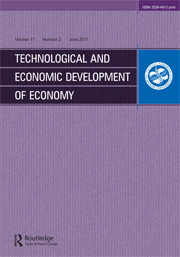MULTIMOORA for the EU Member States Updated with Fuzzy Number Theory
MULTIMOORA for the EU Member States Updated with Fuzzy Number Theory
Author(s): Alvydas Baležentis, Willem Karel M. Brauers, Tomas BaležentisSubject(s): Economy
Published by: Vilnius Gediminas Technical University
Keywords: multi-objective optimization; MULTIMOORA; fuzzy number theory; structural indicators; Lisbon strategy; European Union; dominance; core; semi-periphery; periphery
Summary/Abstract: Fuzzy logic handles vague problems in various areas. The fuzzy numbers can represent either quantitative or qualitative variables. The quantitative fuzzy variables can embody crisp numbers, aggregates of historical data or forecasts. The qualitative fuzzy variables may be applied when dealing with ordinal scales. The MULTIMOORA method (Multiplicative and Multi-Objective Ratio Analysis) was updated with fuzzy number theory. The MULTIMOORA method consists of three parts, namely Ratio System, Reference Point and Full Multiplicative Form. Accordingly, each of them was modified with triangular fuzzy number theory. The fuzzy MULTIMOORA summarizes the three approaches. The problem remains how to summarize them. It cannot be done by summation as they are composed of ranks (ordinal). Indeed summation of ranks is against any mathematical logic. Another method, the Dominance Method, is used to rank the EU Member States according to their performance in reaching the indicator goals of the Lisbon Strategy 2000–2008. This ranking will group the best performing countries in a Core Group, followed by a Second Group, the Semi-periphery Group. Group 3, the Periphery Group, will encompass the less performing states.
Journal: Technological and Economic Development of Economy
- Issue Year: 2011
- Issue No: 2
- Page Range: 259-290
- Page Count: 32
- Language: English

